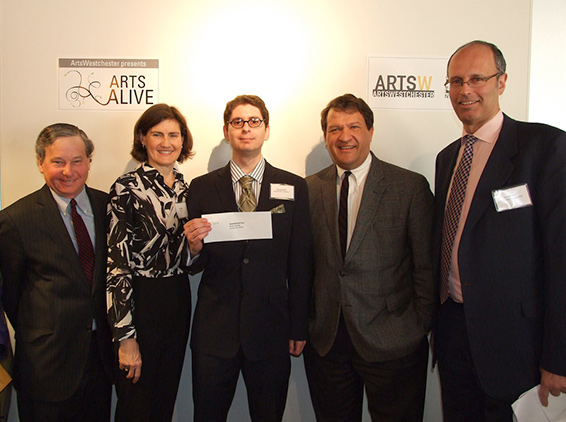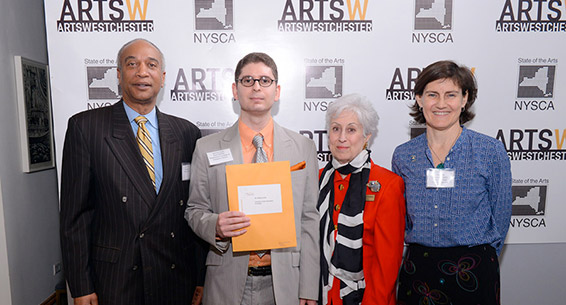—Nicholas Aprea

Arts Alive Awards Breakfast 2013. (L-R) Steve Otis, State Assemblyman (91st District); Lisa Robb, Executive Director at New York State Council on the Arts (NYSCA); Nicholas Aprea, Nowodworski Foundation; George Latimer, State Senator (37th District); David Gelfarb, County Legislator (9th District)

On February 15 I had the opportunity to attend the presentation of ArtsWestchester’s 2013 Arts Alive Grants on behalf of the Nowodworski Foundation. As I watched representatives from 35 different organizations from across Westchester receive funding for projects ranging from music and dance to creative writing and graphic design, I could not help but reflect on the diminishing support for arts programs overall. This may seem like an odd commentary, especially considering where I was when I thought of it, but the numbers speak for themselves. The total amount of grant money given out at the event was $41,000. That’s $41,000 to be split between the above mentioned 35 organizations. A simple calculation will reveal that that averages out to $1,171.42 per group. Just for comparison, a recent article in the Wall Street Journal estimated that the average person spends about $1,700 a year on upkeep and data costs for a smartphone.
Cutting funding for the arts has unfortunately become something of a trend in the past few years. A casual Google search will yield numerous examples from the local, state, and federal governments. The economy obviously plays a significant part in this funding cutoff, as does the fact that art programs are usually listed as extracurricular activities – in belt-tightening times it simply makes sense to focus solely on the programs that are deemed essential. But while much ado has been made about building a core curriculum around math and science in our country’s educational systems, the beneficial effects of art and music as complementary programs are quickly being overlooked.
The CEOs of the Boeing Company, United Technologies, Eli Lilly and Company, and the Bayer Corporation have all been quoted as saying that it is the arts that foster the innovation and the creativity in the minds of the scientists and technicians who develop the products that make their companies the multi-billion dollar juggernauts that they are today. The few psychological studies that have been conducted regarding this subject matter appear to back up these claims: if a future scientist or engineer accomplishes artistic endeavors at some point in their early lives, there is a greater chance that he or she will become an innovator in their respective field as an adult. And innovation tends to lead to profit.
The bottom line is that public service announcements may stress the importance of math and science while simultaneously warning us that our country is lagging behind the rest of the world in those two categories (currently, I believe we are ranked 25th math and 17th in science). The shift in educational focus may even lead to an increase the amount of scientists and engineers that our colleges produce, but without the arts as a backbone the spirit of innovation will be noticeably absent from their work. Science and engineering projects can always be outsourced, and scientists and engineers can always be insourced (most likely from those countries that rank above the U.S. in math and science), that’s just the way that capitalism works, but innovation and creativity can only be homegrown.
